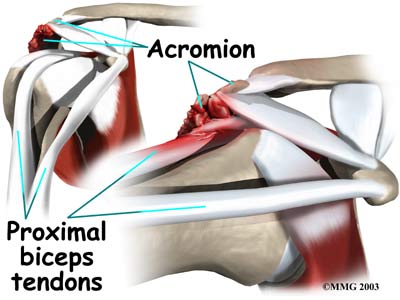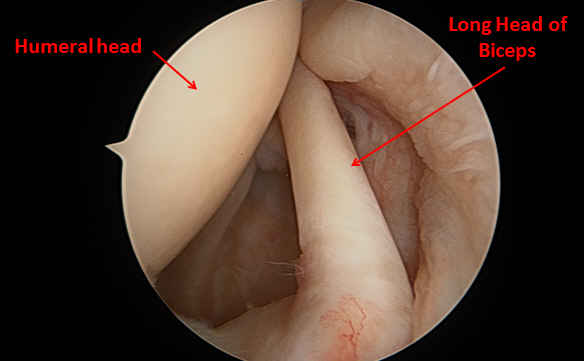Sam Akhavan, MD
Pittsburgh Orthopaedic Sports Medicine Doctor
Arthroscopy Surgeon for Knee & Shoulder Surgery, Pain and Injuries
SHOULDER
ARTHROSCOPY
SURGEON
KNEE
ARTHROSCOPY
SURGEON
Biceps Anchor Lesions
The biceps has two tendons at the level of the shoulder (thus the name, Bi- ceps). One of these tendons can be seen inside the shoulder. The tendon inserts on the labrum, a cartilage structure inside the shoulder (see shoulder dislocation and labrum tear section).
Biceps problems affect people of all ages. In younger patients, the biceps may become detached along with labrum, causing a lesion known as a SLAP (superior labral anterior-to-posterior) lesion. In older patients, the biceps may become frayed and may be a source of shoulder pain.
In all cases, treatment for biceps anchor lesions will typically start with rest, anti-inflammatories and physical therapy. Occasionaly, we may perform a cortisone injection directly into the biceps sheath.
When these treatments fail, surgery may be an option. Surgery may involve a debridement of inflammed tissue surrounding the biceps, a biceps tenotomy (where the biceps is cut) or a biceps tenodesis (where the biceps is cut and reattached to bone).
In cases where a SLAP tear exists, a repair of the SLAP lesion may be performed depending on the nature of the lesions.
CLICK BELOW FOR A SLAP REPAIR PERFORMED BY DR. AKHAVAN
Anatomy of the Proximal Biceps Tendon
Intraoperative Picture of a Biceps Tendon
Click Below to see an Animation of a Biceps Anchor Repair
Click Below to see an Biceps Anchor Repair by Dr. Akhavan


